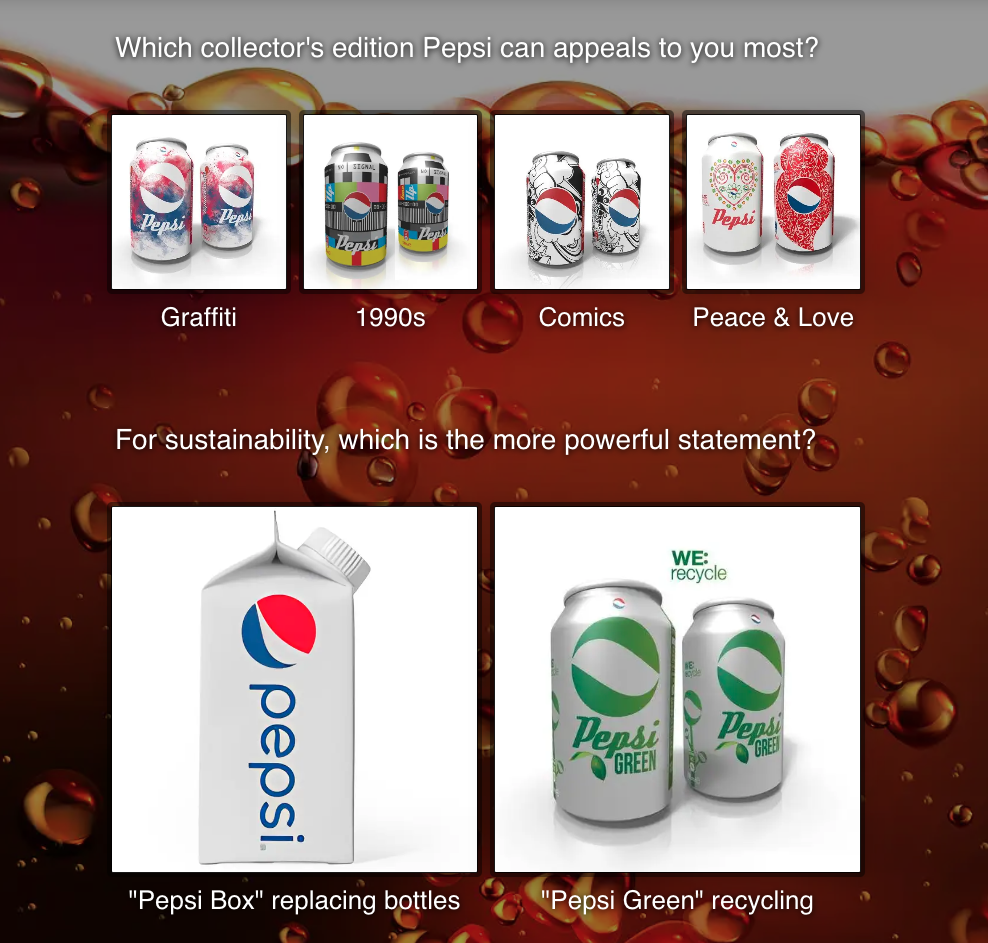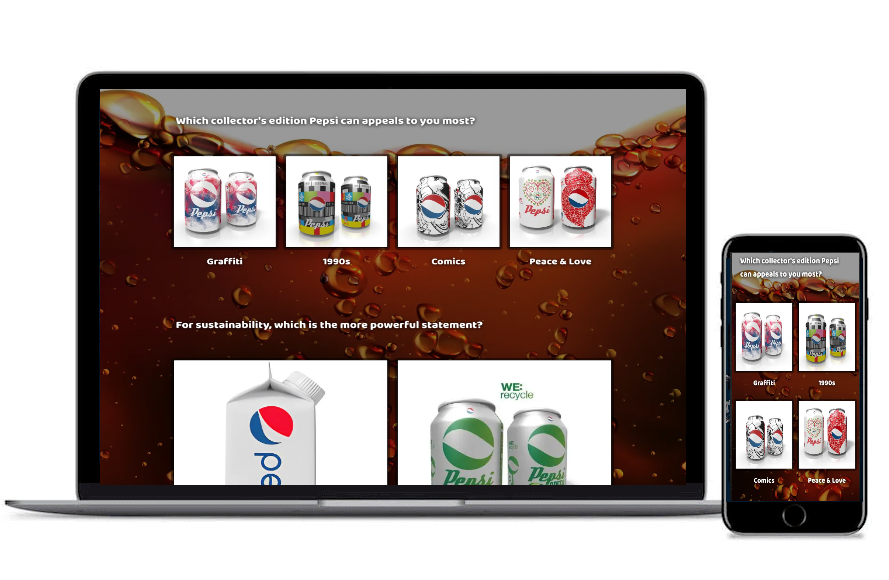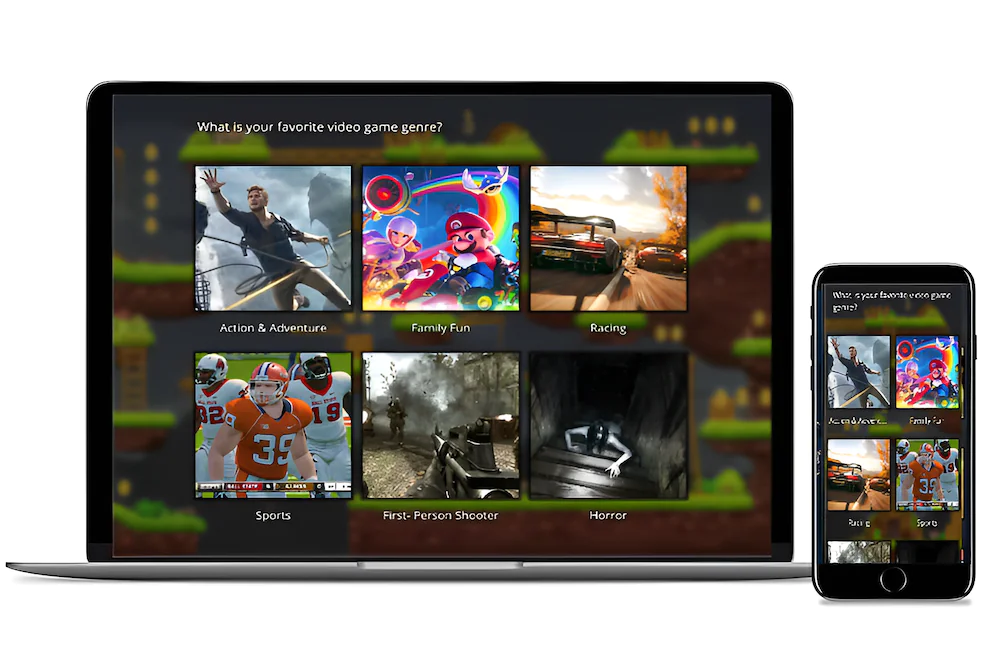The Dutch Gold bear-shaped honey bottle. The blue Tiffany & Co. box. The Pringles can. There are many examples of iconic packaging, and you can bet there was a packaging survey behind them. A product packaging survey helps companies gather feedback and insights from consumers regarding the packaging of their products, helping them decide whether the product packaging is a hit – or a miss. In this blog, we’ll look at the reasons to conduct product packaging research, the benefits of doing so, and how to create a product packaging survey.
Create your FREE product packaging survey, poll, or questionnaire!
Why Conduct Product Packaging Research?
When creating a new package, a company will typically rely on brand managers, product managers, marketing executives, and research and development teams to design something compelling. In a perfect world, their opinion would be enough and the packaging design would be embraced by everyone. But this is not the case, as the judgment of internal teams can become clouded by their own ideas, as explained in this amazing article by Decision Analyst.
Here are seven things that can go wrong when you don’t survey consumers about product packaging.
- Overly complex messaging. Too many elements on the packaging can confuse consumers and dilute the most important messages.
- Using the wrong material. The packaging material should be chosen based on the product’s characteristics and the consumer’s needs. For example, packaging must have the right material or the product can spoil, or consumers may demand recycled material.
- Outdated-looking design. Unless it’s meant to be retro, an “old” look can turn off potential customers.
- Errors. Spelling mistakes, typos, and incorrect information can make the product look unprofessional and unreliable.
- Misplaced transparency windows. When using a transparency window, it must be strategically placed to showcase the product in the best way.
- Wastefulness. Using excessive packaging can lead to bad unboxing experiences or upset consumers who are concerned about carbon footprints.
- Overly difficult to open. Unless it’s regulated, for example drug packaging, packaging that is too hard to open can be a turn-off for consumers.
- Generic looking. You want to stand out on the shelves. If your packaging is too plain, it will not be memorable and could lead to poor sales.
12 Benefits of Product Packaging Surveys
Along with avoiding the eight mistakes above, there are 12 major benefits to using a product design survey.
1. Gauging Consumer Preferences
One of the primary purposes of a product packaging survey is to understand consumer preferences. By asking questions about design, color, material, and overall appearance, you can gain insights into what packaging elements resonate most with your target audience.
2. Identifying Improvement Opportunities
Surveys can help you identify areas where your packaging might be falling short. For example, you can ask about perceived durability, ease of use, or the ability to keep the product fresh. This can guide you in making necessary improvements.
3. Analyzing Competitors
Comparing your packaging with that of competitors can provide a lot of insight. You may uncover elements you want to emulate, or learn that you’re presenting a much more appealing package.
4. Guiding Branding and Messaging
Packaging plays a crucial role in conveying your brand identity and product messaging. Surveys can help you assess whether your it effectively communicates your brand values and the benefits of your product. Check out our blog on 25 Great Branding Resources.
5. Launching New Products
Before launching a new offering, it’s valuable to get feedback on the proposed product packaging design. A survey can help you refine your packaging based on consumer input, potentially saving you from costly mistakes.
6. Avoiding Rebranding Mistakes
Often, a company changes its product packaging when rebranding, but it’s not always successful. Surveying customers can help avoid costly and/or disastrous rebranding mistakes. For example, in 1998, Lay’s launched WOW! Chips, fat-free versions of their popular products. However, the chips’ key ingredient was fat substitute Olestra, which acted as a laxative. As a result, the FDA made the company include the statement that the chips could cause “stomach cramps, diarrhea, and anal leakage” on their packaging, a huge turnoff to consumers.
7. Understanding Sustainability Concerns
Today, 75% of consumers consider sustainability when making purchases. This growing concern about environmental issues can have a big impact on your packaging choices. You can use surveys to understand whether consumers prefer eco-friendly packaging and if they are willing to pay more for it.
8. Engaging Consumers
Engaging your customers in the packaging design process can create a sense of ownership and loyalty. Surveys demonstrate that you value their input and are willing to adapt based on their feedback. Additionally, engaged consumers help your product go viral. Unboxing videos, in which someone films themselves opening your product, are huge on YouTube and get lots of views. A Disney-themed Kinder Eggs unboxing video highlighting the toys inside the sweets has attracted more than 35 million views! Talk about good advertising.
9. Gathering Quantitative Data
Surveys provide quantitative data, allowing you to gather and analyze responses statistically. This data can be invaluable for making data-driven decisions and tracking changes in consumer preferences over time.
10. Collecting Cost-Effective Insight
Conducting surveys is often more cost-effective than other forms of market research, such as focus groups or in-person interviews. Online surveys, in particular, can reach a wide audience quickly and inexpensively.
11. Improving Visibility
Good packaging gets recognized and can help you create a following, as noted in the three examples at the start of this blog. Easily identifiable packaging is also more likely to result in loyalty, increasing sales
12. Gaining Repeat Business
When customers like your packaging, whether it’s eye-catching, easy to open, meets their sustainability needs, and so on, they are more likely to continue purchasing your product versus the competition.
Product Packaging Survey Example
At SurveyLegend, we believe a picture is worth much more than 1000 words. That’s why, in addition to multiple choice questions, opinion scales, emoji, thumbs, and star ratings, we’re well known for our easy-to-create image surveys. These are ideal for product packaging surveys where you need to highlight different designs, compare your packaging with the competition, and more. Here’s an example of a Pepsi product packaging survey using SurveyLegend images. You can even randomize the pictures every time a respondent enters the survey, minimizing any potential bias.

30 Product Packaging Questions To Ask
Know you need to conduct a packaging or product design survey but unsure exactly what to ask? Here are 30 questions to get you started in ten key areas we’ve discussed already.
1. Overall Impression
- What is your initial impression of the product packaging?
- On a scale of 1 to 10, how visually appealing do you find the packaging?
- Would the packaging catch your attention when displayed on a shelf?
2. Design and Aesthetics
- What do you like or dislike about the packaging design?
- Which design elements (colors, graphics, fonts) do you find most appealing?
- Does the packaging design convey the product’s purpose or benefits clearly?
3. Messaging and Information
- Is the information on the packaging (product name, description, benefits) clear and easy to read?
- Are there any additional details you would like to see on the packaging?
- Does the packaging effectively communicate the product’s features and advantages?
4. Material and Durability
- What do you think about the quality of the packaging materials?
- Is the packaging durable enough to protect the product during transportation and storage?
- Do you perceive the packaging as eco-friendly or sustainable?
5. Practicality and Functionality
- Is the packaging easy to open and access the product?
- Does the packaging keep the product fresh or in good condition?
- Are there any improvements you would suggest regarding the packaging’s functionality?
6. Brand Perception
- Does the packaging accurately represent the brand’s values and identity?
- Does the packaging make you more or less likely to trust the brand?
- How well does the packaging align with your expectations of the brand?
7. Environmental Concerns
- Are you more likely to purchase products with eco-friendly or recyclable packaging?
- Would you be willing to pay a premium for products with sustainable packaging?
- What sustainable packaging features do you value the most (e.g., recyclability, biodegradability)?
8. Comparison with Competitors
- How does this packaging compare to that of competing products in the same category?
- What makes this packaging stand out (or not) compared to others?
- Does the packaging make you more inclined to choose this product over competitors?
9. Purchase Behavior
- Has packaging ever influenced your decision to purchase a product?
- How important is packaging to your overall product purchasing experience?
- Have you ever refrained from buying a product due to its packaging?
10. Suggestions for Improvement
- What specific changes or improvements would you recommend for the packaging?
- Is there anything missing from the packaging that you believe should be included?
- Do you have any other feedback or comments about the packaging?
Conclusion
A product packaging survey is a valuable tool for understanding consumer preferences, improving packaging design, and making data-driven decisions that can lead to increased sales and customer satisfaction. It allows you to stay competitive in the market and adapt to changing consumer preferences. Ready to create your survey? SurveyLegend makes it easy, and it’s free to get started. Give it a try today!
Have you created a product design survey in the past? Were you happy with the results? What do you think about our survey image questions? Let us know in the comments!
Create your FREE product packaging survey, poll, or questionnaire!
Frequently Asked Questions (FAQs)
Not only does packaging protect your product, it serves as the customer’s first touchpoint with your brand. It is the first thing they see and therefore has a direct impact on your product sales and brand perception.
These surveys should be conducted at least yearly to be sure you’re staying on top of trends and are maintaining relevance. This sets a benchmark for which to continually gauge your packaging’s public image. If you’re rebranding or revamping your packaging, surveying is a must to avoid costly mistakes.
Most product packaging surveys are distributed online because it is cost-effective and has the ability to reach a wide and geographically diverse audience. If your packaging requires a demonstration or is unique enough to require participants to be able to touch it physically, an in person focus group may be used. A panel research company can help put that focus group together.
A product survey, or product design survey, asks consumers to evaluate the product itself, while a packaging survey focuses strictly on the exterior packaging.




